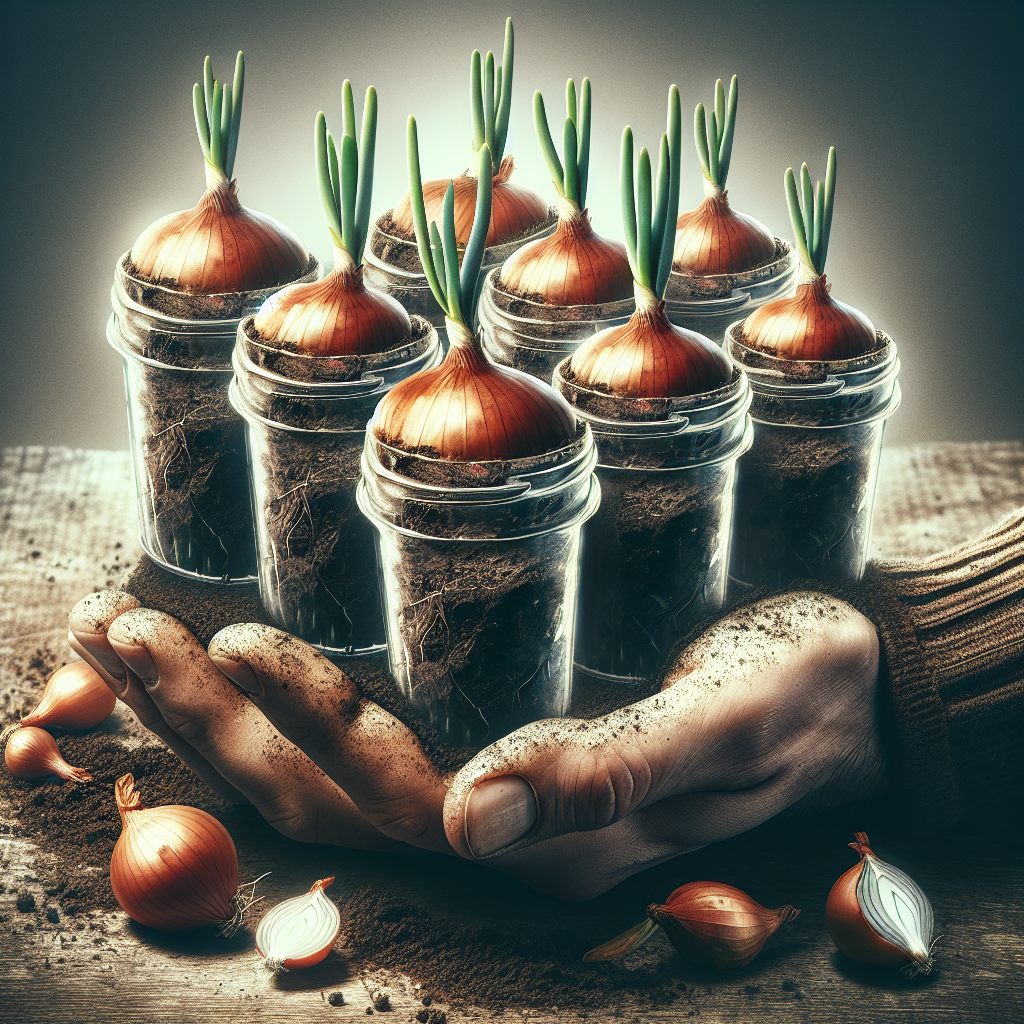Onions are a versatile and essential ingredient in many dishes around the world. Whether you’re whipping up a stir-fry, tossing together a salad, or simmering a hearty soup, chances are you’re reaching for an onion to add depth and flavor to your culinary creations. And what’s even better is that you can easily grow your own onions right at home, even if you have limited space. In this article, we’ll explore how to grow onions in small containers so you can savor the flavors of fresh, homegrown produce right on your own doorstep.
Why Grow Onions in Small Containers?
Growing onions in small containers has several advantages. For one, it allows individuals with limited outdoor space, such as apartment dwellers or those with small balconies or patios, to still enjoy the satisfaction of gardening and the taste of freshly harvested onions. Additionally, growing onions in containers makes it easier to control factors such as soil quality, moisture levels, and temperature, which can ultimately result in healthier plants and higher yields.
Choosing the Right Container
When selecting containers for growing onions, there are a few key factors to consider. First and foremost, be sure to choose containers that are at least 8-12 inches deep to allow ample room for onion roots to develop. Additionally, make sure the containers have drainage holes to prevent waterlogging and root rot.
For smaller varieties of onions such as green onions or scallions, shallow containers like window boxes or troughs may be suitable. However, if you’re looking to grow larger bulb onions, opt for deeper pots or planters.
It’s also worth noting that onions prefer slightly acidic soil with good drainage. Consider using a well-draining potting mix specifically formulated for vegetables or mix your own using equal parts compost, peat moss, and perlite or vermiculite.
Planting Onions
Onions can be grown from seeds, sets (small bulbs), or transplants. If starting from seeds, sow them directly into your container at a depth of about ¼ inch and space them out according to the variety’s recommended spacing (usually 4-6 inches apart). Keep the soil consistently moist but not waterlogged until the seeds germinate.
For sets or transplants, plant them at the same depth as they were previously growing and water thoroughly after planting. Onions thrive in full sun but can tolerate some shade; aim for at least 6-8 hours of sunlight per day for optimal growth.
Caring for Your Onion Plants
Once your onion plants are established, there are a few key care tips to keep in mind:
1. Watering: Onions prefer consistent moisture but don’t like soggy conditions. Water your plants regularly but allow the top inch of soil to dry out between waterings.
2. Fertilizing: Onions are moderate feeders and benefit from a balanced fertilizer applied every 2-3 weeks during the growing season. Look for a fertilizer high in nitrogen to promote leafy growth.
3. Weeding: Keep your onion container free of weeds that can compete with your plants for nutrients and moisture.
4. Mulching: Mulch around your onion plants with straw or shredded leaves to help retain soil moisture and suppress weeds.
Harvesting Your Onions
The timing of harvesting will depend on the type of onion you’re growing:
• Green Onions: These can be harvested when they reach about 6-8 inches tall by simply cutting off the tops as needed.
• Bulb Onions: Harvest bulb onions when their tops have turned yellow and begun to fall over naturally (usually around late summer). Gently lift them from the soil with a fork and allow them to cure in a warm, dry place for 1-2 weeks before storing.
Storing Your Homegrown Onions
Proper storage is essential for preserving the flavor and longevity of your homegrown onions:
• Green Onions: Store green onions in a glass of water on the countertop or refrigerate them wrapped in damp paper towels for up to one week.
• Bulb Onions: Store bulb onions in a cool (but not cold), dark place with good airflow such as a pantry or cellar. Avoid storing them near potatoes as they release gases that can cause each other to spoil more quickly.
Try Growing Other Vegetables in Containers
In addition to onions, many other vegetables can be successfully grown in small containers including tomatoes , peppers , herbs , lettuce , strawberries , carrots , radishes , cucumbers etc .
So don’t let limited outdoor space stop you from enjoying fresh produce right from your own home! With just a little creativity and planning,
you too can savor the flavors of homegrown veggies all season long.
In conclusion,
Growing onions in small containers is not only possible but also rewarding! With minimal space requirements and some basic care tips,
you can enjoy fresh-from-the-garden flavor right outside your doorstep.
So why not give it a try? Start planting some onion seeds today,
and before you know it,
you’ll be savoring delicious dishes made with homegrown goodness.
Happy gardening!













